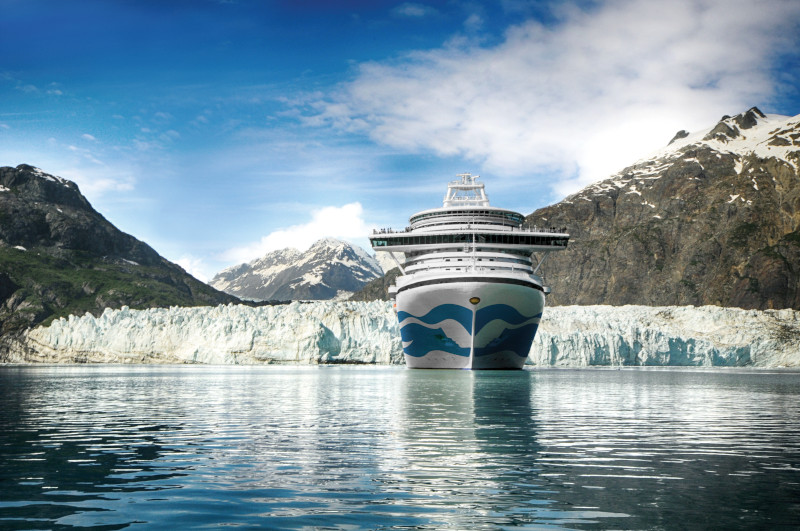Day 1 - San Francisco, California
Cable cars, the Golden Gate rising from the fog - welcome to San Francisco, arguably the most romantic and cosmopolitan city in the United States. San Francisco has it all: a colorful history, superb restaurants, sophisticated museums, world-class shopping, and that elusive air of romance and abandon that's part of the tang of the city.
Day 2-3 - At Sea
Enjoy cruise at Sea.
Day 4 - Ketchikan, Alaska
Ketchikan is known as Alaska's "First City" because it's the first major community travelers come to as they journey north. Located on an island, Ketchikan began life as an Indian fishing camp. The name Ketchikan comes from a Tlingit phrase that means "eagle with spread-out wings," a reference to a waterfall near town.
In the early 1900s, when gold was Alaska's claim to fame, fishing and timber industries were established in Ketchikan. The growth of these industries helped make this Inside Passage port Alaska's fourth-largest city.
Visitors to Ketchikan will be intrigued by its rich Native heritage, which includes the world's oldest collection of totem poles at Totem Heritage Center. The Haida, Tlingit and Tsimshian are all a part of the city's colorful history. Ketchikan, with its abundance of salmon, is also a sportfishing paradise. Sightseers will be impressed with both the scenic town and its surroundings, especially Misty Fjords National Monument.
Day 5 - Juneau, Alaska
In 1880, it was slow going for Joe Juneau and Richard Harris as they searched for gold with the help of Native guides. After climbing mountains, forging streams and facing countless difficulties, they found nuggets "as large as beans."
From their discovery came three of the largest gold mines in the world. By the end of World War II, more than $150 million in gold had been mined. Eventually the mines closed, but the town Joe Juneau founded became the capital of Alaska and the business of gold was replaced by the business of government.
Some 30,000 people live in Juneau. Its total area makes it one of the biggest towns, in size, in the world. Only Kiruna, Sweden, and Sitka, Alaska, exceed Juneau's 3,248 square miles.
Today Juneau is famous not only for gold and government but also for its breathtakingly beautiful glaciers and stunning views of both water and mountains.
Day 6 - Haines, Alaska
A canoe slipped into the mouth of the Chilkat Inlet in November 1879, carrying Presbyterian missionary S. Hall Young and his friend, John Muir. Young told the Chilkat Indians that he wanted to build a Christian town. He chose space between two waterways, the Chilkat River and the Lynn Canal, and the town of Haines was born.
During the 1900s, a permanent army post was built and named Fort William H. Seward. The post was abandoned in 1946 and sold to a group of veterans who re-established it as Port Chilkoot. In 1970, the area became part of the City of Haines and when the fort became a national historic site in 1972, the name was changed back to Fort William H. Seward.
Haines is the home of the Chilkat Bald Eagle Preserve, where as many as 4,000 bald eagles gather each fall to feast on spawning salmon along the Chilkat River. Naturalists and photographers come from all over the world to witness one of the most unusual and impressive sights in nature's kingdom. As many as 80 have been seen perched in a single tree and more than a hundred may be captured within the frame of a single photograph.
Day 7 - Endicott Arm and Dawes Glacier (Scenic Cruising), Alaska
This narrow fjord is located approximately 50 miles southeast of Juneau and is part of the Tracy Arm-Fords Terror Wilderness area. Breathtaking Endicott Arm extends over 30 miles long, with nearly one-fifth of its area covered in ice. At the head of the fjord, tidewater glaciers, such as the Dawes Glacier, regularly expel enormous chunks of ice into the waters below in a magnificent process known as calving. During the summer when Princess ships visit, icebergs float along the surface of the glistening water in an array of sizes, from just a few inches up to three stories wide.
Protected within the Tongass National Forest, Endicott Arm is a haven for wildlife. Black and brown bears, deer, wolves, harbor seals, mountain goats and a variety of seabirds have been spotted in the area.
As you glide through the pristine fjord, you'll first pass by a lush forest where a number of beautiful waterfalls cascade down, and then you'll be treated to views of snowcapped mountains and blue-tinged glaciers more spectacular than you could ever imagine.
Day 8 - At Sea
Enjoy cruise at Sea.
Day 9 - Victoria, Canada
Victoria exudes old-world charm and fragrant, colorful flowers are everywhere. Founded in 1843 by James Douglas of the Hudson's Bay Company, the city was first known as Fort Victoria. By 1848, Vancouver Island was a British colony and Victoria was its capital.
In 1858, Victoria was a tent city and the base for some 25,000 prospectors on their way to the Frasier River gold fields. When Vancouver Island was incorporated with mainland British Columbia in 1868, Victoria became the capital of the entire province.
Although it's a port city, Victoria is not as industrially oriented as Vancouver. The harbors, especially Inner Harbour, are dotted with pleasure craft, ferries and floatplanes. The city is renowned for its beautiful gardens, charming houses and very British feel.
Day 10-11 - At Sea
Enjoy cruise at Sea.
Day 12 - San Francisco, California
Disembarkation



